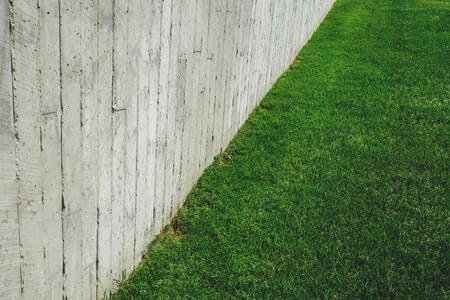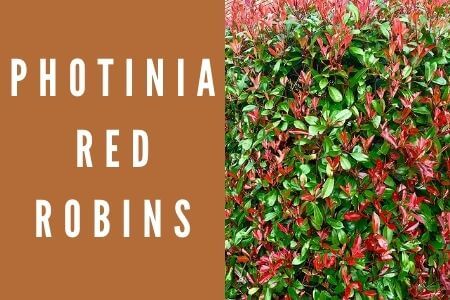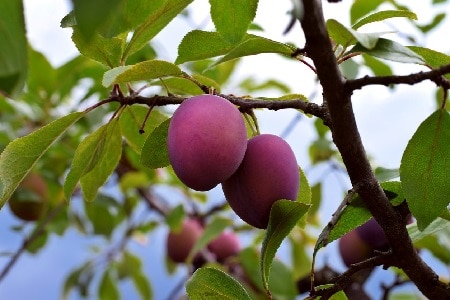If you have ever come across a green, gray-green plant in the shape of an inverted V (^) with tiny spikes (serrated margins) along its curves, then you’ve probably seen an ‘Aloe Vera‘ plant. Its leaves are lanced-shaped meaning that they start off a little wide and taper off to a point.
The leaves are arranged in a rosette. The main rosette of an Aloe plant grows to about 2 feet high.
Aloe Vera is an evergreen perennial plant (a plant that takes more than two years to mature), a succulent plant from the genus Aloe under the family Asphodelaceae. Succulent meaning that it exhibits a higher rate of water retention.
Aloe Vera tends to exhibit a shallow root system. Its roots grow wide but not deep into the soil, and hence, the Aloe Vera can survive in a wide range of climates including /especially the arid climates. The roots of the Aloe Vera form a symbiotic association with a fungus (arbuscular mycorrhiza) that penetrates inside the roots to enable it to have better access to water and nutrients in the soil.
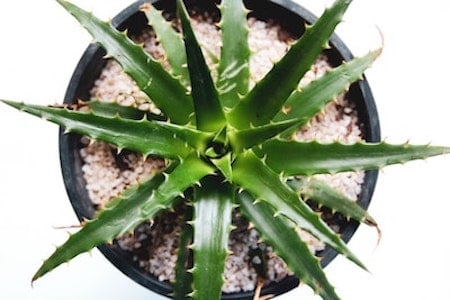
The main mode of propagation is through the sucker or offshoot/offsets. They grow from the base of plants. Aloe Vera has a life span of 12 years though they mature in four to five years.
Check out a few details to help you find your way around the Aloe Vera:
Blooming Of Aloe Vera
Mature plants of 4 years and above are expected to produce blooms. The Aloe Vera plant bloom, rise from an ‘inflorescence‘ that soars above the attractive rosette. The blooming of the Aloe Vera plant is a rare sight for indoor gardeners due to the lack of sufficient light though it is a lapse that can be swiftly corrected. The possibility that the plant is not yet “of age” could be another reason why your Aloe Vera hasn’t bloomed yet.
The Aloe Vera plant is created for arid climates or deserts in layman’s terms. Hence, they have succulent leaves that retain water and shallow roots. One of the best ways to induce your Aloe Vera to bloom is to imitate/mimic the desert conditions with high sunlight occurrence. Aloe Vera does best in temperatures between 70°H and 85°H (degree in Fahrenheit) during the day and no lower than 60°H at night.
Aloe Vera Irrigation
An effective watering technique usually starts with a well-draining container preferably a clay pot that is porous with enough watering /draining holes at the bottom. A balance needs to be struck between watering and over-watering as over-watering may cause wilting and darkening of leaves or blistered cells in the case of edema where too much water has been absorbed.
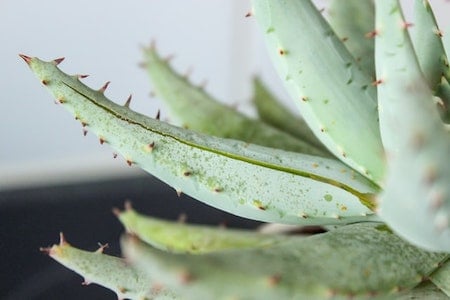
A succulent mixture or cactus soil mixed with normal soil with preferably pebbles or gravel at the bottom (to support aeration), works just great for the Aloe Vera plant.
A sure way to test the soil for if the Aloe Vera plant needs water is by putting the finger, knuckle deep into the soil to feel the moisture of the soil. If it is dry, wait a few days before watering.
Aloe Vera needs deep and infrequent watering. Prevent leaving your plant in water as it messes with the roots and then the plant itself.
Fertilisers, Nutrients
Water-soluble fertilisers are best for Aloe Vera. The fertilizers used should be at half strength to help protect the roots from too much salt.
Though the Aloe Vera plant can survive long periods without fertilizers, it still helps to feed them/give them an extra boost especially during the growing seasons. It’s better to water the plant a day before “feeding” to wash out accumulated salts.
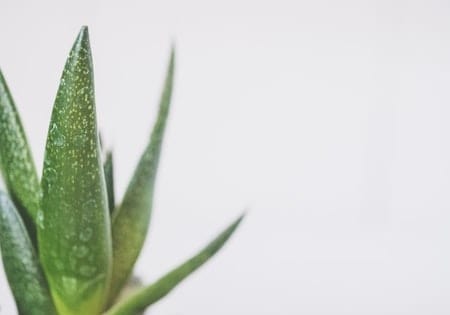
Light
Aloe Vera prefers bright, indirect but not direct sunlight. As direct sunlight often tends to cause the plant to dry out too much and turn its leaves yellow.
Artificial light could also be used as a supplementary source of light.
With the right information, a daunting task becomes easier. The Aloe vera plants are not just ornamental but also medicinal. Why not give it a try today? Your surroundings will thank you. It’s just a mixing pot away!



